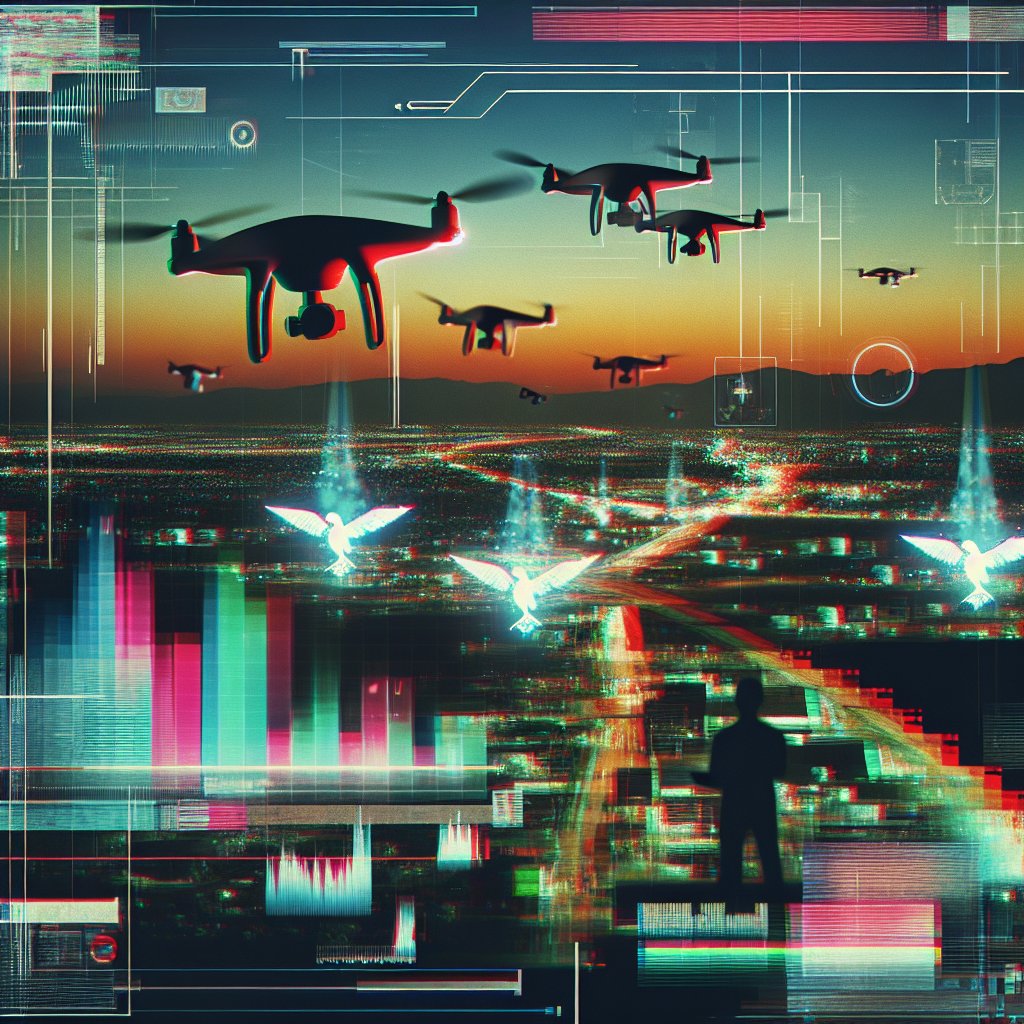FAA Waivers: A Gateway to Unchecked Drone Surveillance
The Federal Aviation Administration (FAA) currently mandates a waiver for drones to fly beyond visual line of sight, ostensibly to safeguard public safety. However, the reality is far more sinister. Since 2018, the FAA has been issuing these waivers for operations such as search and rescue, insurance inspections, and police investigations. Flock, a company deeply entrenched in the surveillance industry, expedites these waivers for police departments, securing approvals in just two weeks. In contrast, private sector clients face a bureaucratic delay of 60 to 90 days. This disparity hints at a deeper collusion between state surveillance apparatuses and tech corporations, leveraging drones as tools for omnipresent monitoring.
The preferential treatment for law enforcement in obtaining drone waivers is a chilling indication of how technology is being weaponized to bolster state control. Drones, equipped with high-resolution cameras and advanced sensors, are not just tools for emergency services but are increasingly used to extend the reach of surveillance capitalism. The ease with which police can deploy these devices points to a future where privacy is systematically eroded under the guise of public safety, with tech companies like Flock playing a pivotal role in enabling this dystopian reality.
Corporate and Government Push for Drone Deregulation
For years, industries with vested interests in drone technology—ranging from e-commerce giants promising drone delivery to medical transporters—have lobbied the government to dismantle the waiver system. Their goal is to facilitate easier approvals for beyond visual line of sight operations, a move that would significantly expand their operational scope. In June, President Trump issued an executive order advocating for ‘American drone dominance,’ followed by the FAA’s release of a new proposed rule in August, signaling a dangerous shift towards deregulation.
The proposed rule categorizes permissible beyond visual line of sight drone operations into areas like package delivery, agriculture, aerial surveying, and civic interest, which includes policing. This would streamline the approval process for operators in these sectors, effectively broadening their surveillance capabilities. The push for deregulation is not just about convenience or efficiency; it’s a calculated move by corporations and governments to normalize pervasive drone surveillance, further entrenching the mechanisms of techno-authoritarianism.
Privacy Erosion and the ACLU’s Warning
Jay Stanley, a senior policy analyst with the ACLU’s Speech, Privacy and Technology Project, warns that the FAA’s proposed rule opens the skies to a vast increase in beyond visual line of sight drone flights without adequate privacy protections. Stanley, who served on the FAA’s rule-making commission, emphasizes the dire implications of this policy shift. ‘The FAA is about to open up the skies enormously, to a lot more [beyond visual line of sight] flights without any privacy protections,’ he states.
The ACLU has long argued that fleets of drones enable persistent surveillance, capable of monitoring protests, gatherings, and everyday life, severely undermining public expectations of privacy. This unchecked proliferation of drones, coupled with the absence of robust privacy laws, sets the stage for a dystopian future where citizens are constantly watched, tracked, and profiled by an intricate network of aerial surveillance devices. The looming threat of mass surveillance through drones is a stark reminder of the erosion of civil liberties in the digital age.
Public Resistance and the Road Ahead
Citizens still have an opportunity to voice their concerns about the FAA’s proposed rule, with public comments being accepted until October 6. The window for public input is narrow, but crucial in shaping the future of drone regulations. Trump’s executive order mandates the FAA to finalize the rule by spring 2026, a deadline that accelerates the timeline for implementing these potentially invasive policies.
As we stand on the precipice of a drone-filled future, it is imperative for the public to resist the normalization of pervasive surveillance. The battle for privacy and freedom in the skies is just beginning. In this dystopian landscape, the vigilance of individuals and advocacy groups will be the bulwark against a future where drones become the eyes of an all-seeing state. The fight for our digital rights is far from over; it’s time to rise up against the encroaching shadows of surveillance.
Meta Facts
- •💡 Flock expedites FAA drone waivers for police in just two weeks, while private sector waits 60-90 days.
- •💡 President Trump’s June executive order pushed for ‘American drone dominance’ and FAA proposed new rules in August.
- •💡 Public comments on the FAA’s proposed drone rule accepted until October 6, with final rule due by spring 2026.
- •💡 Drones can be equipped with high-resolution cameras and advanced sensors for surveillance.
- •💡 Engage in public comment periods and support privacy advocacy groups to resist drone surveillance expansion.

